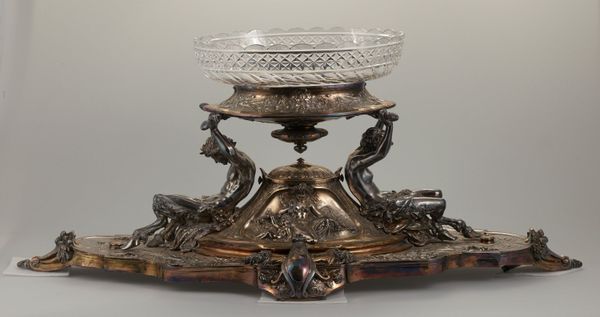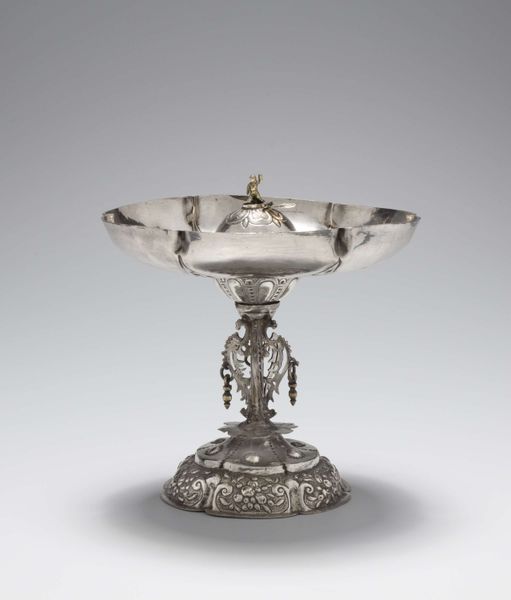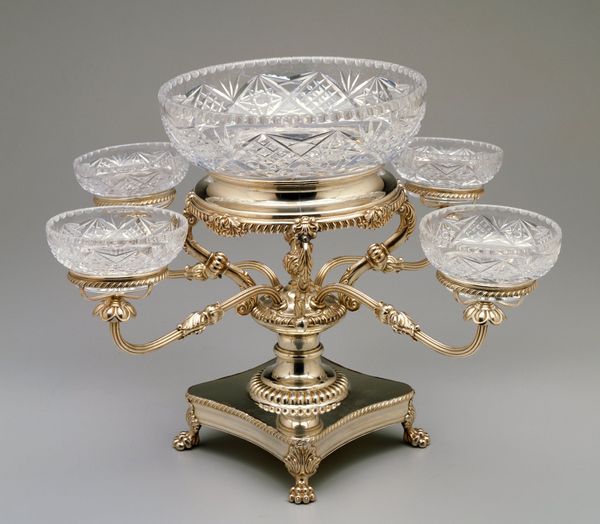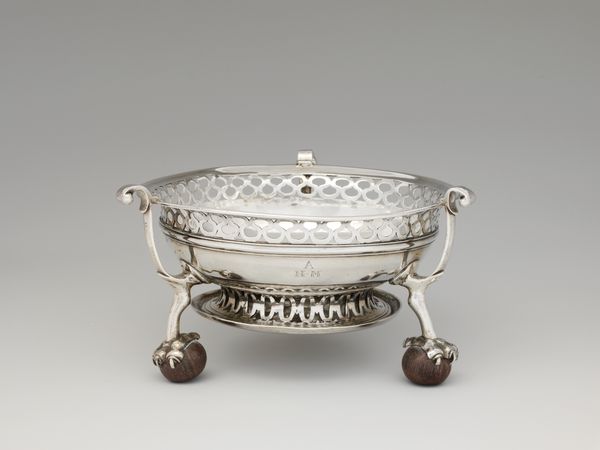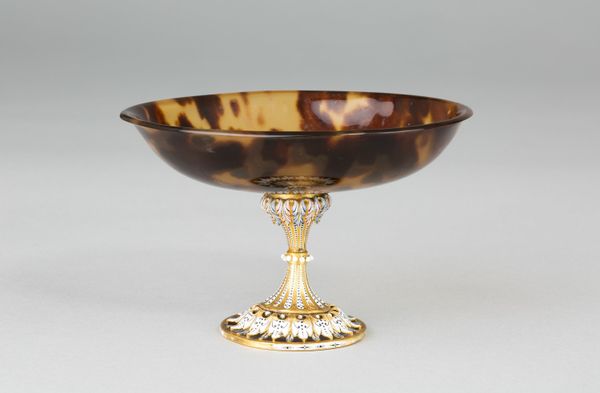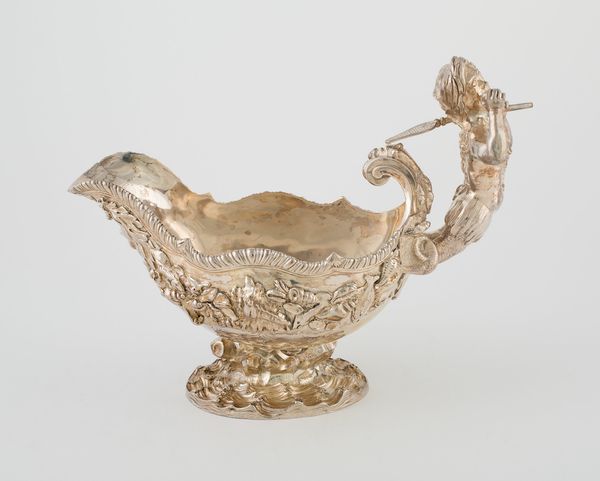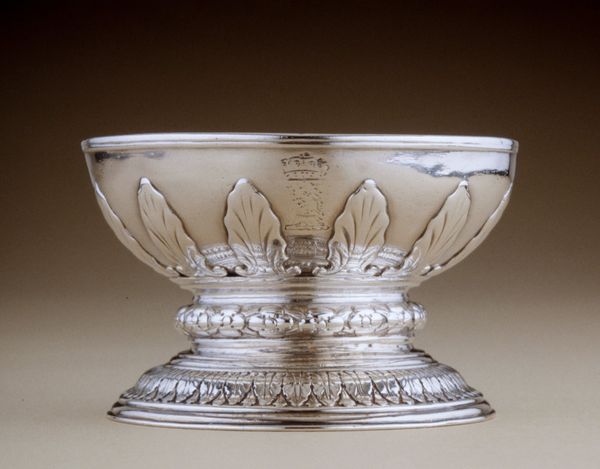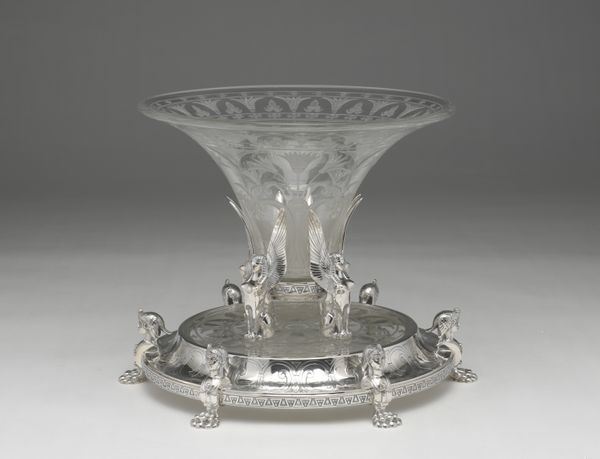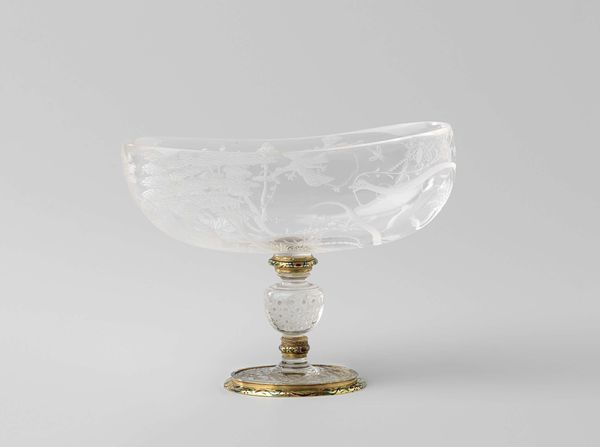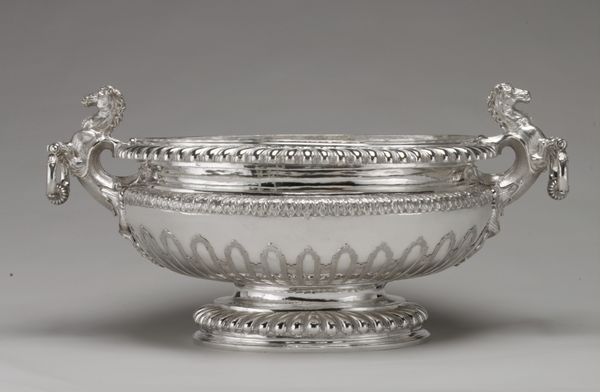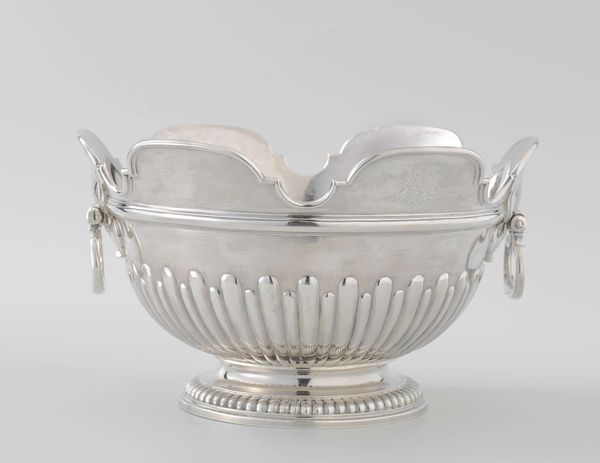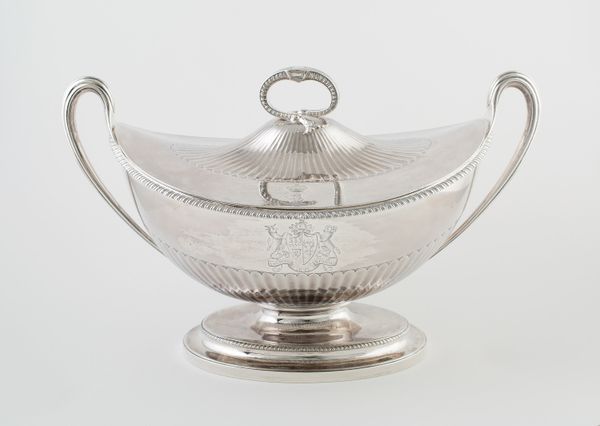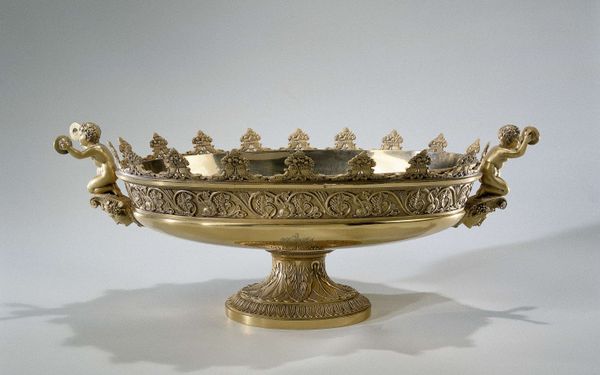
Dimensions: Plateau: 25 × 26.2 × 58.8 cm (9 7/8 × 10 3/8 × 23 1/4 in.); Bowls: 25.6 × 24.4 cm (10 1/8 in. × 9 5/8 in.)
Copyright: Public Domain
Editor: This is the "Three Part Centerpiece" by Baccarat Glassworks, dating from around 1860 to 1870. It’s made of glass and metal, and it’s quite opulent, wouldn't you agree? I'm curious, what stands out to you about this piece? Curator: Its presence certainly evokes ideas of conspicuous consumption, reflecting the social dynamics of the period. Consider the Baroque style – it’s not merely decorative. It signifies power and wealth. Do you see how the cherubic figures both support and almost seem burdened by the weight of the glass? This tension is deliberate, reflecting a complex relationship between labor, beauty, and status. Editor: That’s a great point. I hadn't thought about the "burden" aspect before, just their idealized, cute figures. It makes me think about who would have been at that table. Curator: Exactly! The Centerpiece becomes more than just an object. What does it mean for an elite class to display its power through these objects? How does it reflect and perpetuate the social structures of the time? Editor: It's easy to look past that with pretty things sometimes. This really brings out the ways objects can be expressions of historical systems. I definitely have something to think about now when I visit other decorative art exhibits! Curator: Excellent. Now we can start to examine other glass works from this perspective. Keep thinking critically about the intersection of art, power, and social justice.
Comments
No comments
Be the first to comment and join the conversation on the ultimate creative platform.
